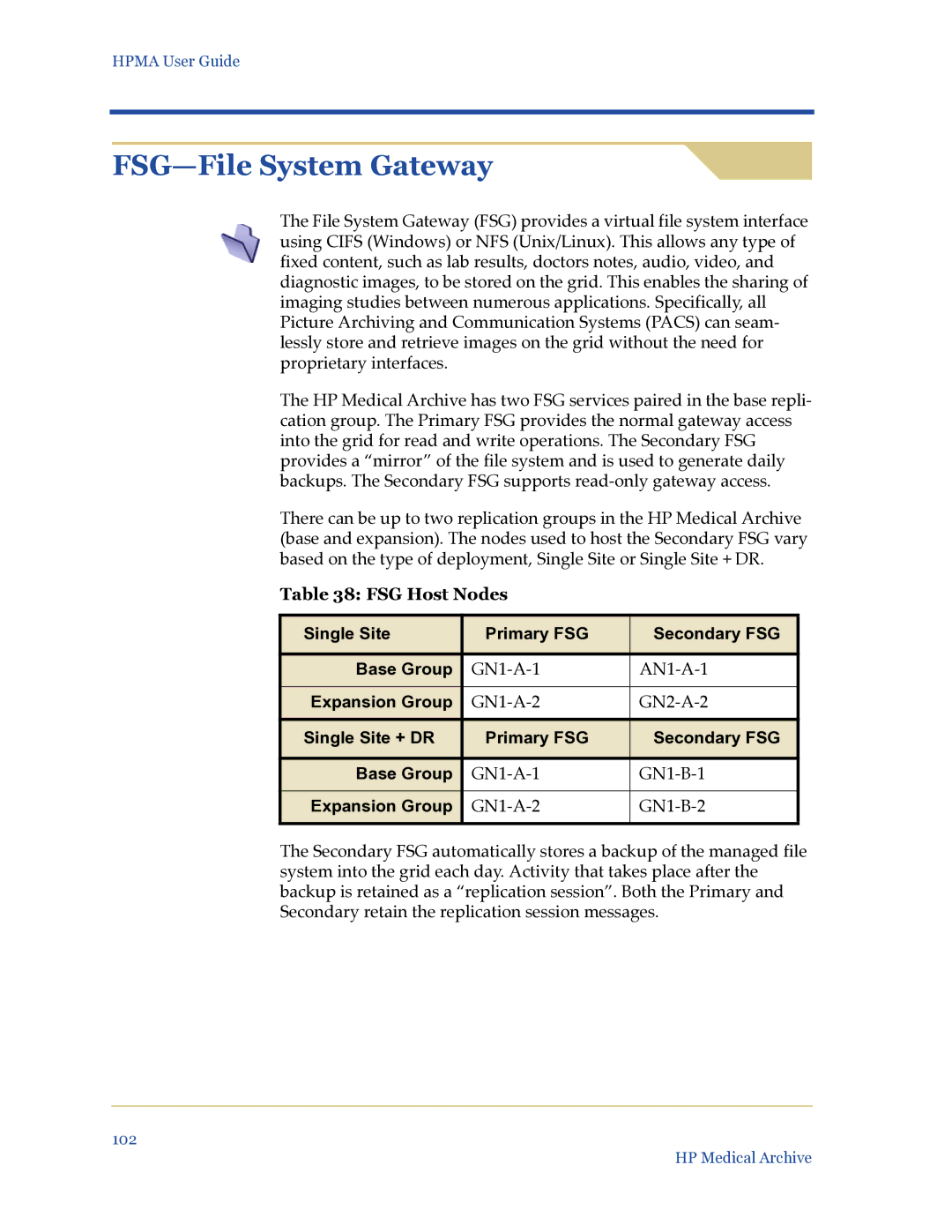
HPMA User Guide
FSG—File System Gateway
The File System Gateway (FSG) provides a virtual file system interface using CIFS (Windows) or NFS (Unix/Linux). This allows any type of fixed content, such as lab results, doctors notes, audio, video, and diagnostic images, to be stored on the grid. This enables the sharing of imaging studies between numerous applications. Specifically, all Picture Archiving and Communication Systems (PACS) can seam- lessly store and retrieve images on the grid without the need for proprietary interfaces.
The HP Medical Archive has two FSG services paired in the base repli- cation group. The Primary FSG provides the normal gateway access into the grid for read and write operations. The Secondary FSG provides a “mirror” of the file system and is used to generate daily backups. The Secondary FSG supports
There can be up to two replication groups in the HP Medical Archive (base and expansion). The nodes used to host the Secondary FSG vary based on the type of deployment, Single Site or Single Site + DR.
Table 38: FSG Host Nodes
Single Site | Primary FSG | Secondary FSG |
|
|
|
Base Group | ||
|
|
|
Expansion Group | ||
Single Site + DR | Primary FSG | Secondary FSG |
|
|
|
Base Group | ||
|
|
|
Expansion Group |
|
|
|
|
|
The Secondary FSG automatically stores a backup of the managed file system into the grid each day. Activity that takes place after the backup is retained as a “replication session”. Both the Primary and Secondary retain the replication session messages.
102
HP Medical Archive
